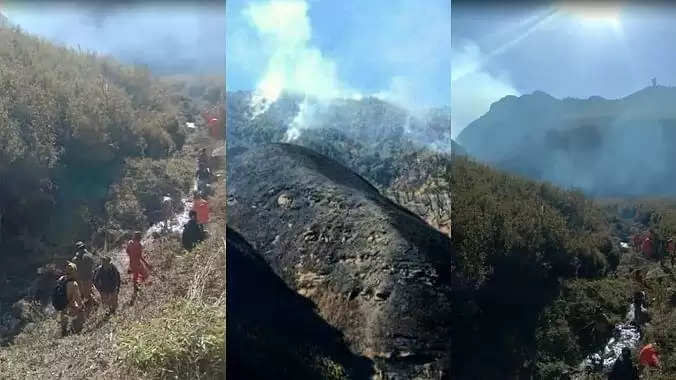EDITORIAL | Dzukou Valley: Nagaland & Manipur’s treasure on fire, who or what caused it?

FROM THE EDITOR'S DESK:
The Dzukou Valley is at the borders of the northeastern states of Nagaland and Manipur and is known for its natural scenic beauty.
Though famous for a variety of flora and fauna, the most famous is the Dzukou Lily, found only in this valley.
However, as 2020 ended, a fire broke out in Dzukou range in Nagaland’s Kohima district on December 29 - the cause of which remains undetermined.
Though authorities tried to contain the spread of the fire, strong winds fed the raging inferno which later spread to Mt. Asli - the highest peak in Manipur.
The extent of the damage caused by the wildfire even prompted Union Home Minister Amit Shah to step in.
On January 3, the president of the Southern Angami Youth Organization (SAYO), Zakiieto Tziikrii, informed that approximately 10 square kilometres of the Dzukou range had been razed by the fire.
Though most wildfires are naturally occurring disasters, we must remind ourselves that wildfires can cause damage to property, human life, native vegetation, animals, and ecosystems.
Wildfires are among the most common forms of natural disaster in some regions and at most times, have strong ecological effects.
As of August 2020, the wildfires in the year were 13 per cent worse than in 2019 due primarily to climate change and deforestation.
We need more awareness in terms of wildfire prevention to reduce the risk of fires and to lessen the severity and effects.
These prevention techniques include managing air quality, maintaining ecological balance, and protecting resources.
We must also address the role that humans play in wildfires.
Sources of human-caused fire may include arson, accidental ignition, or the uncontrolled use of fire in land-clearing and agriculture such as the slash-and-burn farming - a common agricultural practice in the region.
For now, according to the latest reports, the Dzukou fire is almost under control.
But we cannot take such things for granted and must instead ensure that similar occurrences do not happen.
We must learn from other similar disasters which have taken place across the world.
For example, the 2019–20 Australian bushfire season burnt about 18.6 million hectares (46 million acres; 186,000 square kilometres; 72,000 square miles), destroyed over 5,900 buildings (including 2,779 homes) and killed at least 34 people.
Instead of fighting over Dzukou Valley, we must act now.
Awareness is the key.

















